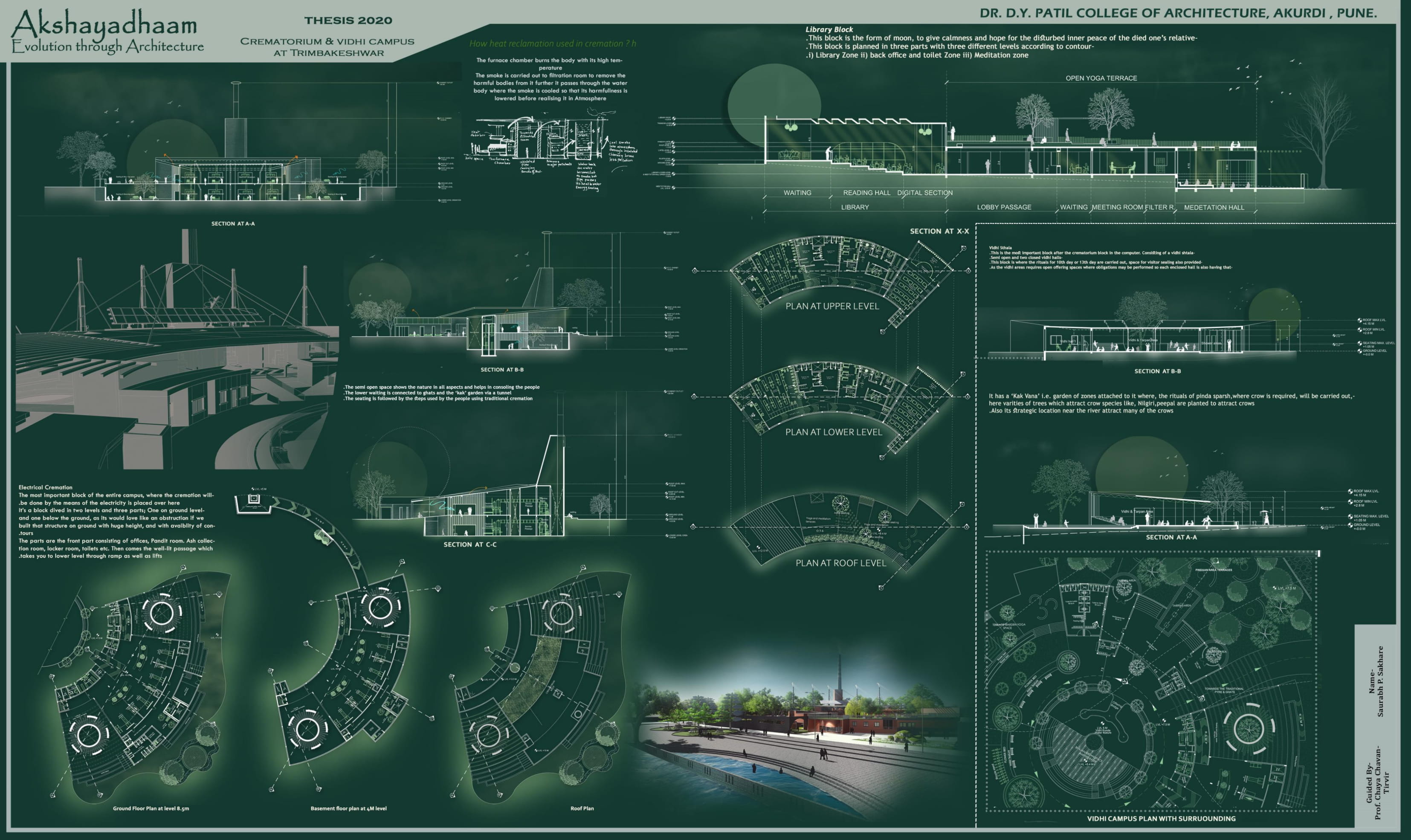


Thesis Title : Akshayadhaam, Evolution through Architecture
Location : Trimbakeshwar, India
Project type: Crematorium
Year of completion : 2020
Name of Thesis mentor: Prof. Chaya Chavan
Death is an inevitable part of every living creature on this earth, and each corpse has to be cremated in specific manner. Crematoriums are the spaces where the body is cremated, hence consequently crematorium becomes a space which one visits in his lifetime, may be dead or alive. Still it’s a place which is not thought of and considered inauspicious and unimportant. These spaces, however, have a potential to become sites where an interesting intersection of mortality and architecture can happen.
Hence the topic of my thesis is “Akshayadhama- evolution through architecture” Crematorium and vidhi campus at Trimbakeshwar
The Hindu belief is that those who visit Trimbakeshwar attain salvation or Moksha. Trimbakeshwar is considered as the most sacred town India. There are many reasons for this belief. Godavari originates from the Brahmagiri hills in this town and it is believed that it is the birthplace of Lord Ganesha, known as place of Tri-Sandhya Gayatri. This place is believed to be the holiest and ideal place to do Shraddha ceremony, a Hindu ritual for the salvation of the soul. Not only its considered the shraddha sthan for salvations but also there are certain vidhis which are only supposed to be done in Trimbakeshwar…
The crematorium which has been proposed has been evolved out by a simple process of of the ritualistic cycle and the sequence of the vidhis needed, and hence a circular form with voids in between to connect to outdoor spaces have been carved out. This makes the circulation in the entire campus free flowing yet very functional, and automatically helps a person to get his/her route though grief stricken.
The form of the clusters have been designed in such a way that a maximum of the views especially the ghats can be seen in a panoramic view from the building blocks also, the positions have been accurately positioned so that the user is not given a feeling of a blockage in his path, as the form is kind of panoramic yet triangular hence visibility is more.
To make it eco friendly provisions are made so that the pollution is done to air and water to minimum level. The services are planned in a way to cool down the smoke and make it less harmful and divert that energy into some other form, this adds to the energy gained by solar panels on strategical locations of the sloping roofs in entire campus. Also, these roofs suit the climate of the site around. The landscape provided is also strategical to the context of the crematorium, and also help fauna needed in crematorium to get attracted to the space e.g. For pinddaan section the landscape involves peepal, trees with banyan tree and maize crops. to attract crows in the section.
Hence in this way this crematorium, though evolved from the traditional rituals and beliefs and certain principles has the ability to sustain in today’s modernising age, and to cater to the most essential requirement of the society and that too in a deferential manner.
Copyright information: ©️ Student author 2020. Prior written authorization required for use.
Request permissions: If you wish to use any part of the documentation forming part of the undergraduate thesis submitted to DSGN arcHive, please seek prior permission from the concerned student author through the respective college/university.
Exclusion of liability: DSGN arcHive and its owner do not undertake any obligation to verify the ownership of any content submitted for publication/broadcast on this website and shall not be liable for any infringement of copyright by, or unauthorized use of, such content.